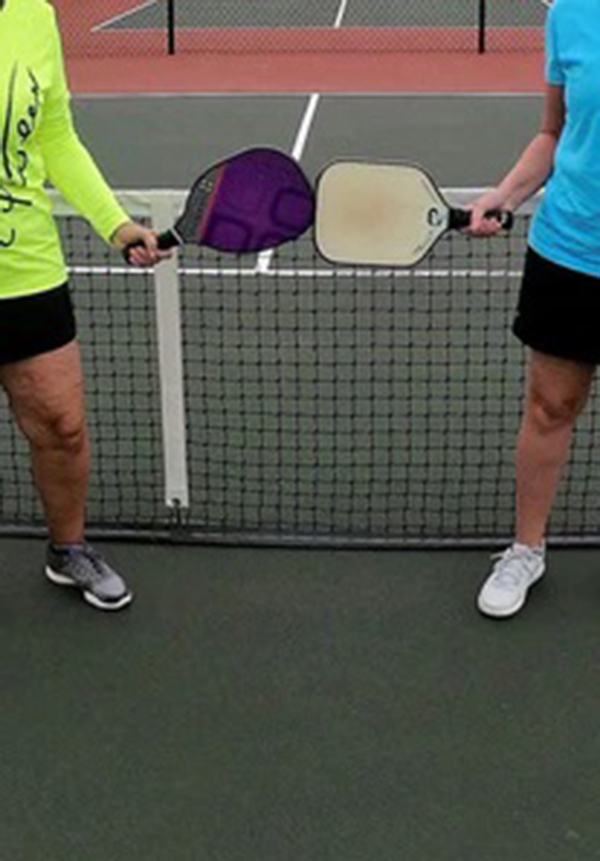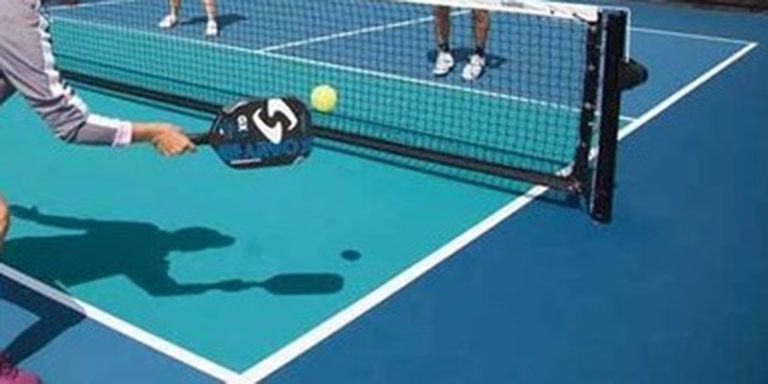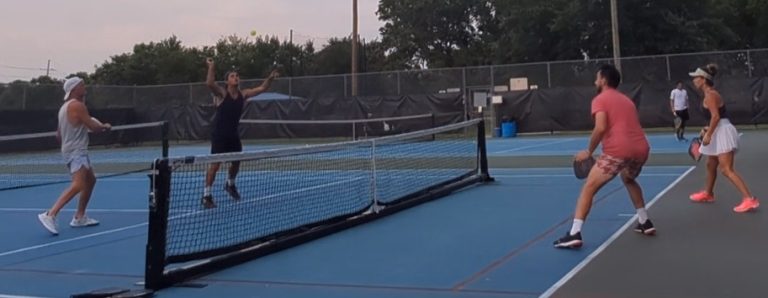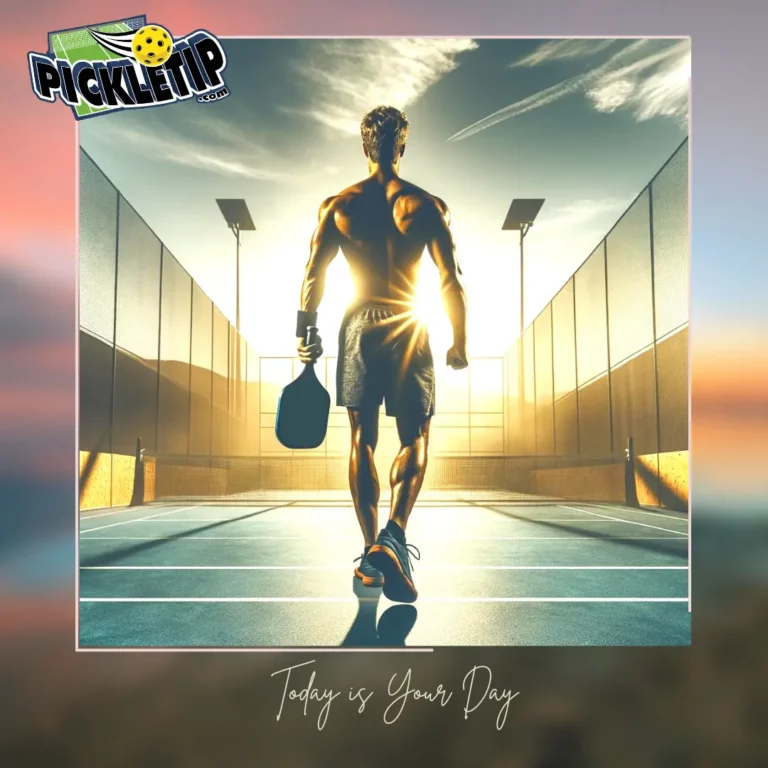Left-Handed Pickleball: Mastering Doubles Pickleball Strategies with and Against Lefties
Mastering Doubles Pickleball with and Against a Left-Handed Player
As a dynamic and fast-paced sport, pickleball demands adaptability and strategy from its players. The presence of a left-handed player can introduce unique complexities to the game, whether you’re partnering with them or playing against them. This article explores key aspects of playing doubles pickleball with a left-handed player and against a left-handed player.
Understanding the Challenges
Right-handed players are accustomed to having their forehand in the middle on the odd side of the court, and their backhand in the middle on the even side. When a left-handed player is introduced, the dynamics shift. Strategic positioning and communication become even more crucial to set up winning shots. While some players may hesitate to partner with a lefty due to the potential confusion, others welcome the challenge and the element of surprise a lefty can bring to the court.
Communicating with a Left-Handed Player
When playing with a left-handed pickleball player, clear and effective communication is key. This can be achieved through:
- Verbal Communication: Use concise cues such as “you,” “me,” or “mine” to indicate responsibilities during gameplay.
- Non-Verbal Communication: Develop a set of hand signals or gestures to indicate shot responsibility, position switching, or strategy adjustments.
Stacking Techniques
Stacking is a strategic positioning technique that can be advantageous when playing with a left-handed player. There are two main variations:
- Half Stack: This involves switching positions only during the serve. This strategy allows the left-handed player to make the most of their positioning with minimal confusion during rallies.
- Full Stack: This involves switching positions after each point. The positioning depends on the score and can be communicated through established signals.
Preventing Paddle Clashes
Paddle clashes can occur when both players attempt to hit the ball simultaneously or cross paths. To prevent these:
- Establish clear communication.
- Stay aware of your partner’s court positioning.
- Anticipate your partner’s shots based on their playing style.
Pros and Cons of Playing with a Left-Handed Player
Pros
- Unique advantage with shots curving differently.
- Advantageous positioning in the middle of the court.
- Forces opponents to adjust their strategies.
Cons
- Requires more effort in coordination and communication.
- Adjusting to different spins and angles from a left-handed player may take time.
- Potential challenges in adapting to stacking strategy and switching positions.
Playing Against a Team with a Left-Handed Player
When playing against a team that includes a left-handed player:
- Study their playing style to anticipate strategies.
- Aim shots towards their backhand side or force them to hit difficult shots.
- Utilize cross-court shots to exploit their positioning.
- Maintain clear communication with your partner.
- Aim shots towards the middle of the court to create uncertainty.
- Stay adaptable and ready to adjust strategies.
Both Forehands in the Middle: Advantages and Considerations
When playing with a left-handed partner, having both forehands in the middle provides certain advantages but also requires strategic considerations:
Advantages
- Both players can utilize their dominant forehand shots more effectively.
- Easier to cover the middle of the court and defend against shots down the middle.
- Allows for quicker reactions to shots and potential poaching opportunities.
Considerations
- Some players may feel more comfortable using their backhand in the middle.
- Player comfort, skill level, and opponent analysis should inform the strategy.
- If stacking is being used, positioning will change throughout the game.
Attacking the Middle: An Effective Strategy?
Attacking the middle when playing against a team that is stacking with a left-handed player can indeed be an effective strategy. Here’s why:
- Communication Challenges: By hitting shots towards the middle, you force the left-handed player and their partner to make quick decisions and communicate effectively. The positioning of the left-handed player in the middle can create uncertainty about who should take the shot, potentially leading to miscommunication and paddle clashes.
- Paddle Clash Disruptions: Creating paddle clashes can disrupt your opponents’ rhythm and cause hesitation in their shots. Paddle clashes often result in weaker or missed shots, giving you an advantage during rallies.
- Court Imbalance: Attacking the middle puts pressure on the left-handed player and their partner to cover a larger portion of the court, making it more challenging for them to defend effectively. It can create gaps and openings for you to exploit.
However, the effectiveness of this strategy depends on various factors, including the skill level and adaptability of your opponents. Some considerations to keep in mind are:
- Player Skill Levels: Assess your opponents’ ability to handle paddle clashes and communicate effectively. If they are experienced and skilled at playing together, paddle clashes may not affect them significantly.
- Personal Skills: Evaluate your own ability to consistently hit accurate shots towards the middle. If your shot placement is inconsistent, you might end up giving your opponents easy opportunities instead.
- Adaptability: Observe how your opponents react to the middle shots. If they quickly adjust their positioning and communication to handle the situation, it may be necessary to modify your strategy.
Pay Attention
When playing doubles pickleball with or against a left-handed player, flexibility, strategic positioning, and clear communication are key. Observe your opponents, adapt your strategies based on their strengths and weaknesses, and always keep the element of surprise on your side. The inclusion of a left-handed player can bring an exciting twist to the game, and mastering these tactics can give you a distinctive edge on the court.







